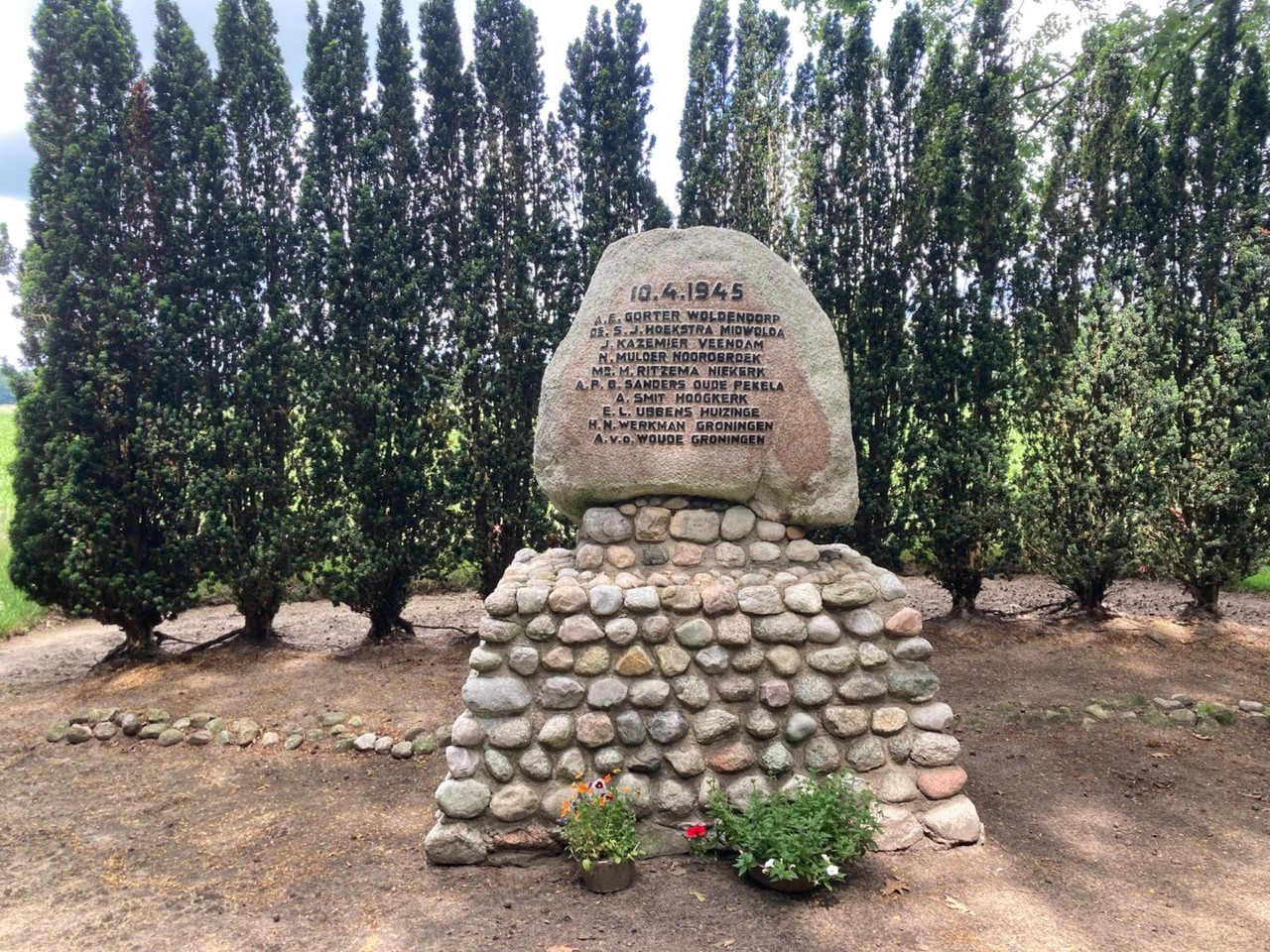The resistance in Friesland played an important role during the liberation period — often in positive ways, sometimes in tragic ones, but always profoundly moving. It is also the central theme in the stories told along this walking route through the Frisian countryside.
As the Canadian liberators advanced in April 1945 — and the long-awaited liberation drew near — panic broke out at the Scholtenhuis in Groningen. During the war, hundreds of resistance fighters had been imprisoned there, interrogated, brutally treated, and tortured. In their desperation, the SD officers stationed there feverishly sought ways to eliminate incriminating individuals. On 10 April 1945, between Bakkeveen and Allardsoog, nine members of the resistance and one artist were executed by the occupiers. A resistance monument now stands there in their memory.
There is also the story of Jan Welfing (1920–1945), a young Frisian who risked his life during the occupation to fight against the German occupiers. On 14 April 1945, the day the municipality of Opsterland was liberated, he was killed in a fierce gun battle in Ureterp. His name lives on in his birthplace, Wijnjewoude, where a street has been named after him — the Welfingstrjitte.
When the municipality of Opsterland was liberated on 14 April 1945, the former labor camp Sparjebird in Hemrik lay deserted. After five long years of occupation, attention quickly turned to hunting down Nazi sympathizers. Members of the NSB (Dutch National Socialist Movement), collaborators, and so-called “moffenmeiden” (women who had relationships with German soldiers) were captured and brought to Sparjebird. They were held there awaiting punishment — guarded at first by members of the resistance, in a grim atmosphere where rough justice was sometimes meted out.



